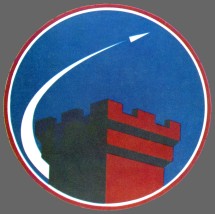The Huntsville Division, U.S. Army Corps of Engineers, came into existence on 15 October 1967 as an organization exclusively dedicated to the task of designing and constructing the facilities needed for the deployment of the Army's Sentinel (later Safeguard) Ballistic Missile Defense System.
Unlike other Corps divisions and districts, Huntsville Division had no other military engineering functions, no civil works responsibilities, and no geographic boundaries. In this respect it was wholly unique within the Corps.
Contracting for the Grand Forks complex moved into high gear during early January 1970 with the preparation of the largest bid package ever printed by the Corps of Engineers in its 195 year history. The total printing job amounted to 2,626,200 pages of architectural drawings and 4,340,000 pages of specifications, enough paper to make a single column reaching 2,500 feet, or twice the height of the Empire State Building, and weighing 65 tons. Individual sets of plans offered to contractors were roughly the size of an office desk and weighed 200 pounds.
Bids were opened at St. Paul Municipal Auditorium at 11:00 AM on 26 March 1970. Of three bids received, a joint venture comprised of Morrison-Knudsen, Inc., Peter Kiewit Sons' Co., Fischbach & Moore, Inc., and C. H. Leavell & Co. submitted the low bid of $137,858,850. The Government estimate had been $126,119,014, but the low bid of Morrison-Knudsen & Associates was formally accepted on 31 March 1970 as the lowest competitive bid. This award constituted the largest single construction contract awarded by the Corps up until that time.
Morrison-Knudsen & Associates received notification to proceed at the beginning of April, and with this notice the actual construction of Safeguard facilities in North Dakota got underway.
Construction of the Montana complex was to proceed differently from Grand Forks due to pressing fiscal considerations. Phase I was to include site excavation and the lower levels of the two radar buildings and power plants and only the first floor level of the PAR building. Phase II would then complete the major facilities.
On 4 May 1970 the Watson Construction Co. was awarded a $3,369,850 contract for Phase I work at the Montana MSR. Two weeks later, on 19 May, a second contract was awarded to H.C. Smith Construction Co. and Amelco Corporation for Phase I work at the Montana PAR. The contractors began work immediately in order to make the most of warm weather in the 1970 construction season.

